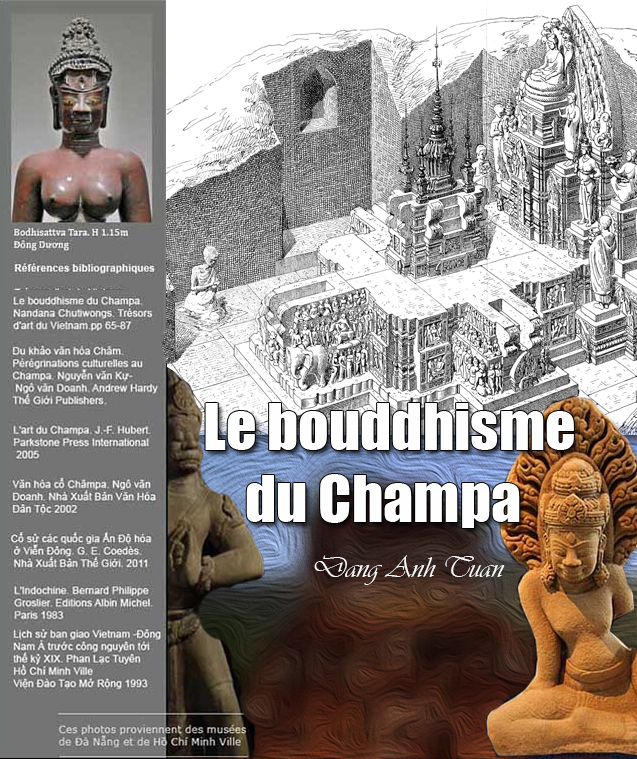Version vietnamienne
Version française
Despite the adoption of Hinduism as the religion by the Cham at the beginning of the creation of their nation, Buddhism did not fail to demonstrate its notable influence among their local elites and leaders. They found in this religion a great number of advantages that allowed them to strengthen not only their legitimacy and power but also an essential touch of divinity in their governance through the notions of dharmaraja (Virtuous King) and cakravartin (Universal Monarch).
Being supposed to embody the power of dharma, they were invested with the sacred mandate to ensure the maintenance of order and religious faith in their kingdom. They were attached to the divine nature that the mission granted them. Similar to the Khmer kings, they gave particular importance to their deification in such a way that their posthumous name included that of the supreme deity with the aim of being equal to Buddha in the form of a Bodhisattva. This is the case of King Indravarman II with his posthumous name « Paramabuddhaloka » (Buddhist title). They thus became « superhumans » among men even if they were not of divine origin. Buddhism soon seduced them and made them adhere to its fundamental aspects: its tolerant spirit, its liberal character, its integration into local culture, and its emphasis on morality.
They brought in religious missionaries via merchant ships because Champa attracted Indian traders very early on. It had long been renowned for its forest products (eaglewood, ivory, spices, etc.). The exact date of the introduction of Buddhism to Champa is not known, but according to Chinese annals, it prospered in 605 AD, when the Chinese army led by General Lieou Fang (Lưu Phương) of the Sui dynasty (nhà Tùy) plundered the Champa capital Điển Xung during the reign of King Cambhuvarman (Phàn Chí in Vietnamese) and took away 1,350 Buddhist texts compiled in 564 volumes after reconquering Tonkin.
The presence of Buddhism should have been noticeable very early in Champa as well as in Vietnam by sea, because according to the Vietnamese scholar Phan Lạc Tuyên, Indian monks came to Vietnam at the beginning of the Christian era based on the story of Chu Đồng Tử, who was initiated into Buddhism during his encounter with an Indian monk. Religious missionaries had to land in Champa before they could reach Giao Chỉ (or Vietnam) and China.
Indrapura dynasty

Under the leadership of its rulers, Champa very early on promoted the establishment of Buddhism, as it was already mentioned by the famous monk Yijing (Nghĩa Tịnh) upon his return from his maritime journey in the Insulinde as one of the countries in Southeast Asia that held the Buddha’s doctrine in high esteem at the end of the 7th century during the reign of Wu Ze Tian (Vũ Tắc Thiên) of the Tang dynasty (Nhà Đường).
Thanks to archaeological remains found in central Vietnam, it is now known that Mahayana Buddhism (Phật giáo Đại Thừa) took root during the second half of the 7th century and gave rise to unprecedented models of Bodhisattva combining local tradition and stylistic elements from abroad, which have since served as a reference throughout the country.

